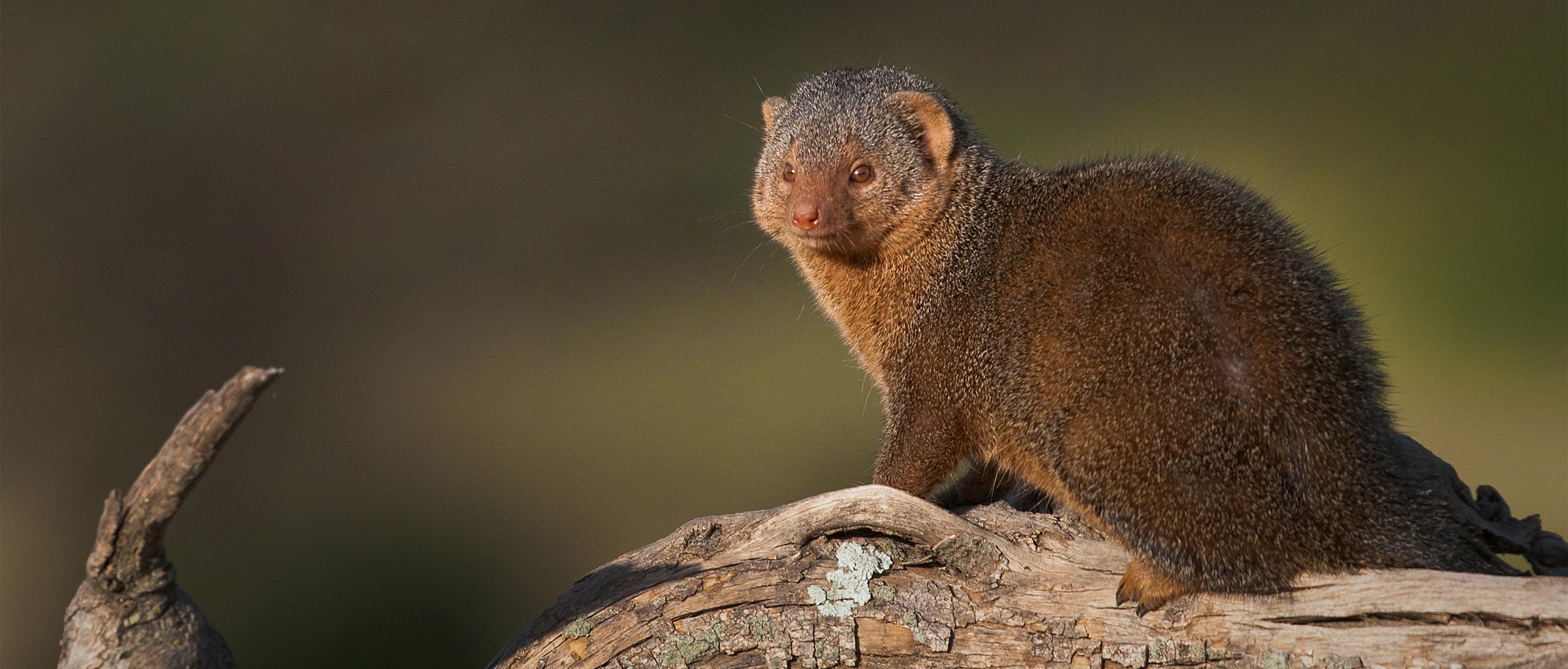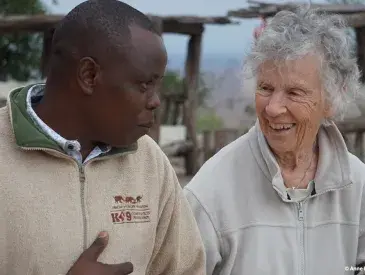What is a dwarf mongoose?
As the name would imply, this species is the smallest of the African mongooses. There are two species: the common dwarf and the desert dwarf. They are stocky, with a fairly short, pointed muzzle and a long, fluffy tail. Their fur color varies but they are usually speckled brown, reddish, or greyish in color.
Helogale parvula (Common dwarf mongoose) Helogale hirtula (Somali/Desert dwarf mongoose)
About 275 grams (1 pound)
20 to 30 centimeters long (8 to 12 inches)
No data for in the wild; up to 10 years in captivity
Forests, open woodlands, thickets, wooded savannahs, semi-arid areas. Wherever there are termites, rock outcroppings, or trees.
Carnivorous
Average about 55 days
Birds of prey, snakes, jackals, and larger mongoose species.
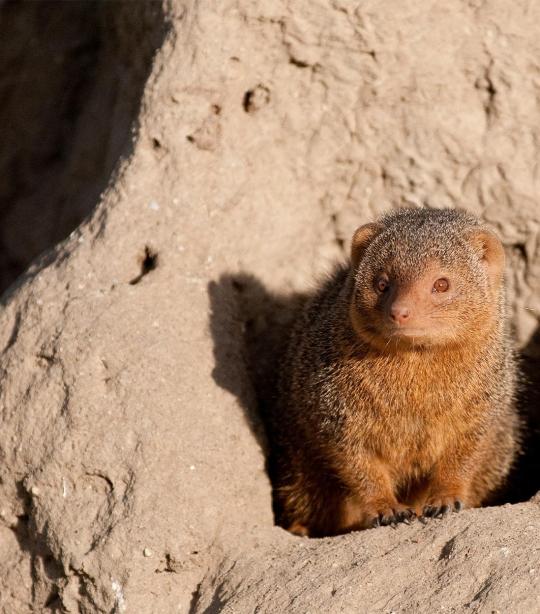
Challenges
Humans hunt mongooses.
In some regions of Africa, they are hunted for food. They are also often persecuted as a pest species because they are egg thieves in regions where their habitat is in close proximity to humans.
Solutions
Our solution to protecting the dwarf mongoose:
African Wildlife Foundation brings together communities and private investors to construct conservation tourism lodges, like The Sanctuary at Ole Lentille, in Kenya. The lodge provides sustainable income for the community and the 20,000-acre conservancy is a safe home to mongooses and a variety of other wildlife.
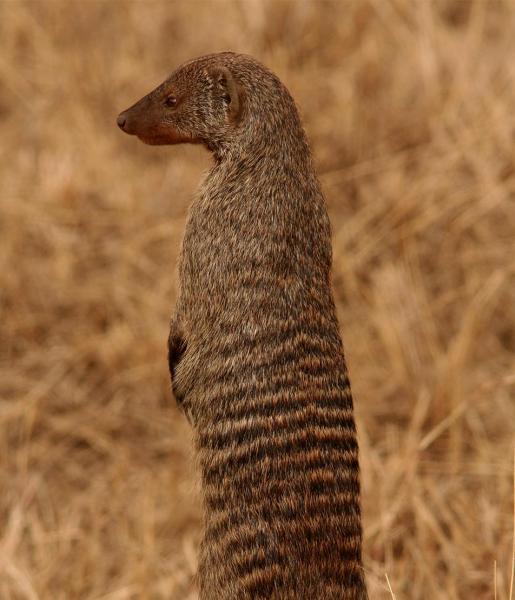
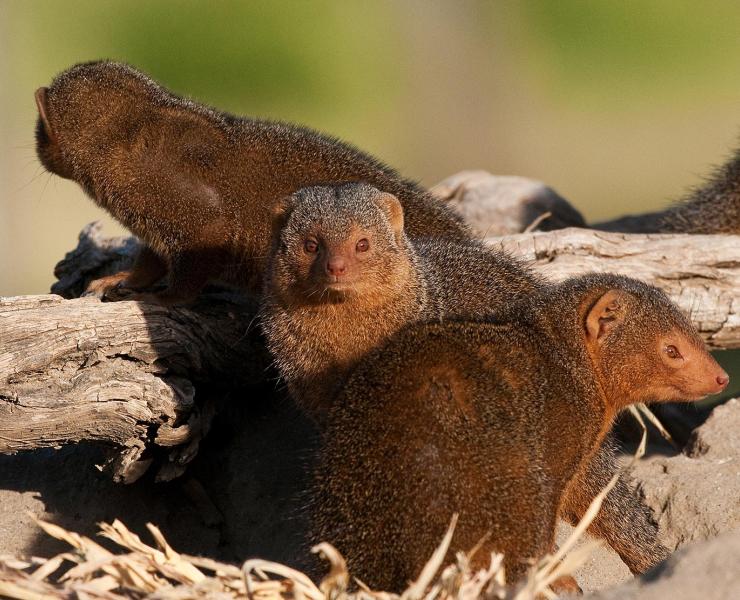
Behaviors
They live in a female-dominated society.
A dominant female and her male consort, usually the oldest animals in the group, are the leaders of the group. The rest of the group is composed of family members, generally older offspring of the dominant pair. Each year the alpha female produces three litters of young, with two to four infants in each litter. The young of the dominant female are second in the group’s social system, tended for and cosseted by subordinate members. However, this status is immediately lost upon the arrival of a new litter. The babysitters, who guard and defend the young, often change during the day so that individuals may forage for food.
Dwarf mongooses are nomads.
They live in groups of 12 to 15 individuals, covering a range of approximately 75 acres that overlap with the ranges of other groups. A range usually contains 20 or more termite mounds, which are used as den sites, lookout posts, and sources of food. Groups seem to be constantly on the move through their range, seldom using a den site for more than a few days at a time.
They have unique adaptations to protect themselves from predators and threats.
They are known to form mutualistic relationships with other species to reduce the risk of predation. For example, they forage together with hornbills. The hornbills warn them of approaching danger, and in turn, the hornbills catch the flying insects that are disturbed by the mongoose. They have also shown adaptations to their nervous systems that make them relatively immune from snakes with neurotoxic venom.
Diet
Despite its small size, the dwarf mongoose is carnivorous.
It consumes small rodents, reptiles, young birds, eggs, termites, locusts, beetles, grubs, larvae, and spiders. Fruit might also be included in its diet. Most of the day is spent looking for food among the brush, leaves, and rocks.
Habitats
Where does the dwarf mongoose live?
Mongooses are found in most parts of Africa. They can be found in a variety of habitats ranging from forests and woodlands to semi-arid areas.
